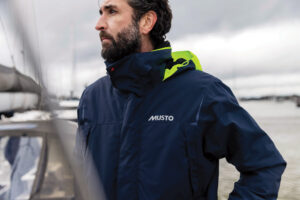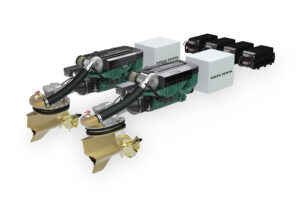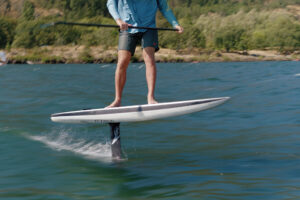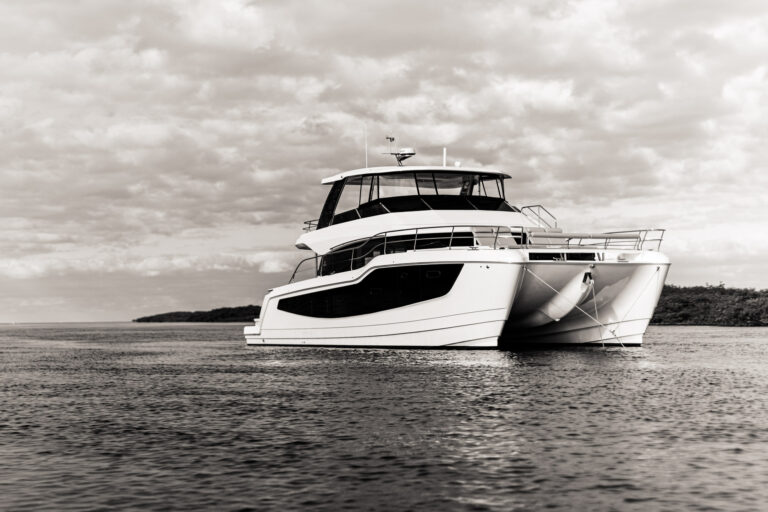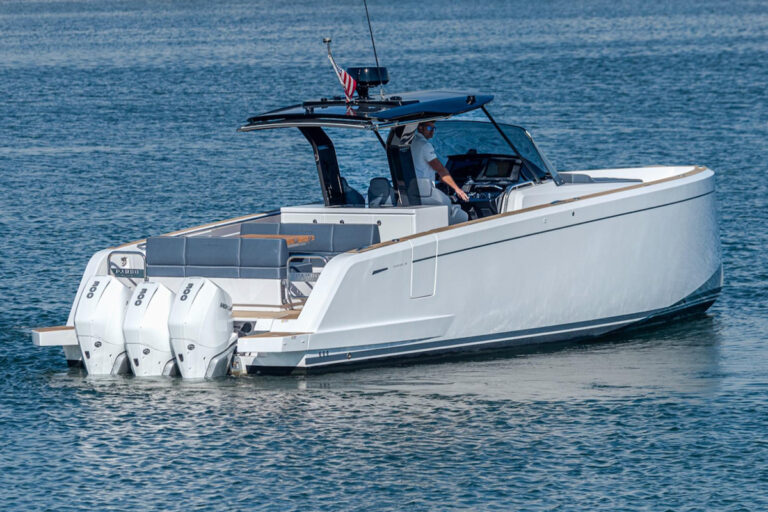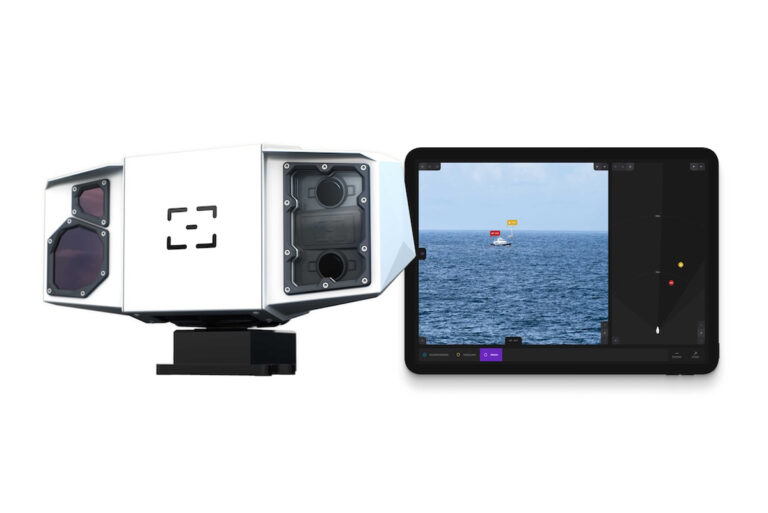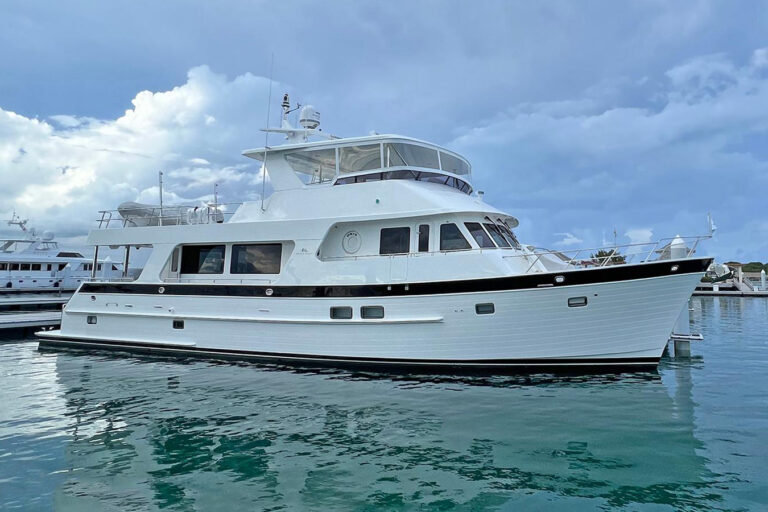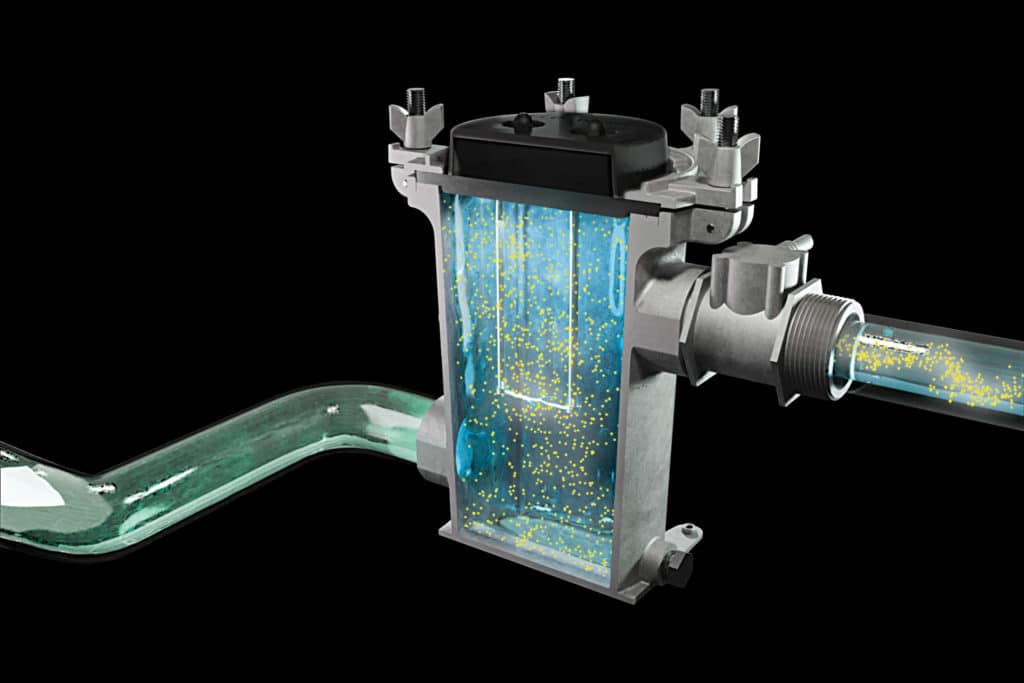
ElectroSea’s Clearline system integrates directly into a yacht’s raw-water intake circuit, keeping it free of line-clogging marine growth using a patent-pending electrochlorination system. The system prevents growth in raw-water supply lines for air conditioners, chillers and refrigerators. Installation consists of a control unit, functioning as the system’s brains, and a ClearCell module, producing chlorine using low-voltage electrodes and raw seawater. The control unit monitors water intake and cell conditions to determine the amount of chlorine to produce in the ClearCell. Owners get free-flowing raw-water lines, maximum flow rates and reduced strainer maintenance.
The company did extensive research to integrate Clearline’s critical design and operating details. First, the system had to be dynamic, low-maintenance, user-friendly and mostly autonomous. It also had to be electrically isolated to prevent electrolysis and small enough to fit in engine rooms. Most important, “the electrodes needed special rare-earth coatings to efficiently catalyze the conversion of sodium chloride in the seawater to chlorine,” says Allison Reis, ElectroSea’s marketing director.
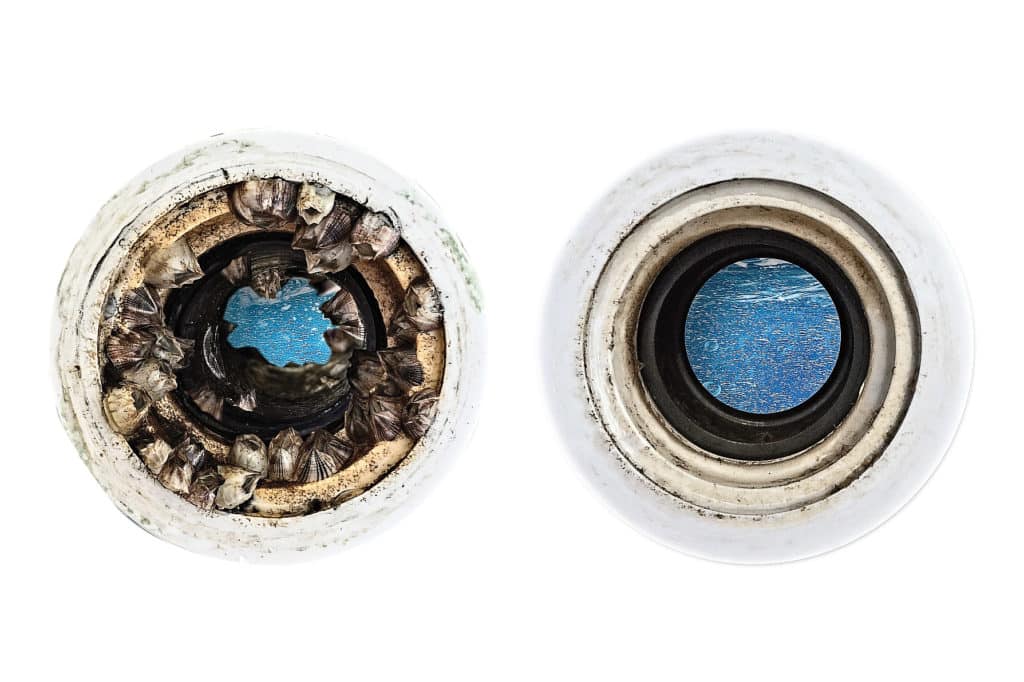
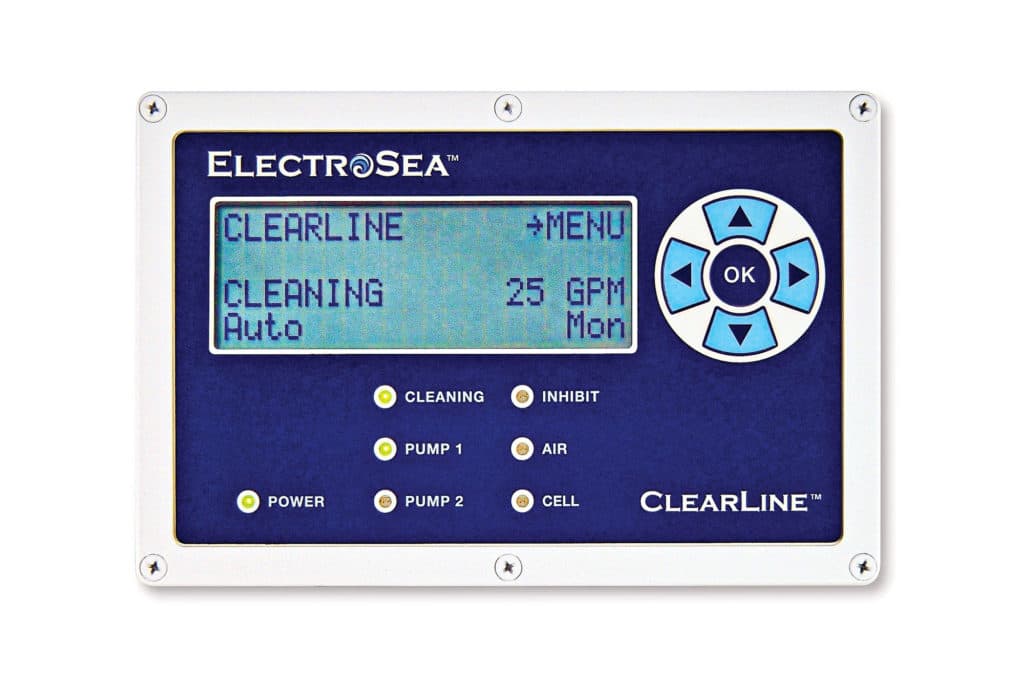
Reis stresses that the system is also environmentally conscious. “Clearline generates very low levels of chlorine,” she says. “Chlorine has a very short half-life in seawater, with two-thirds of it decomposing in less than one minute.”
Take the next step: electrosea.com


